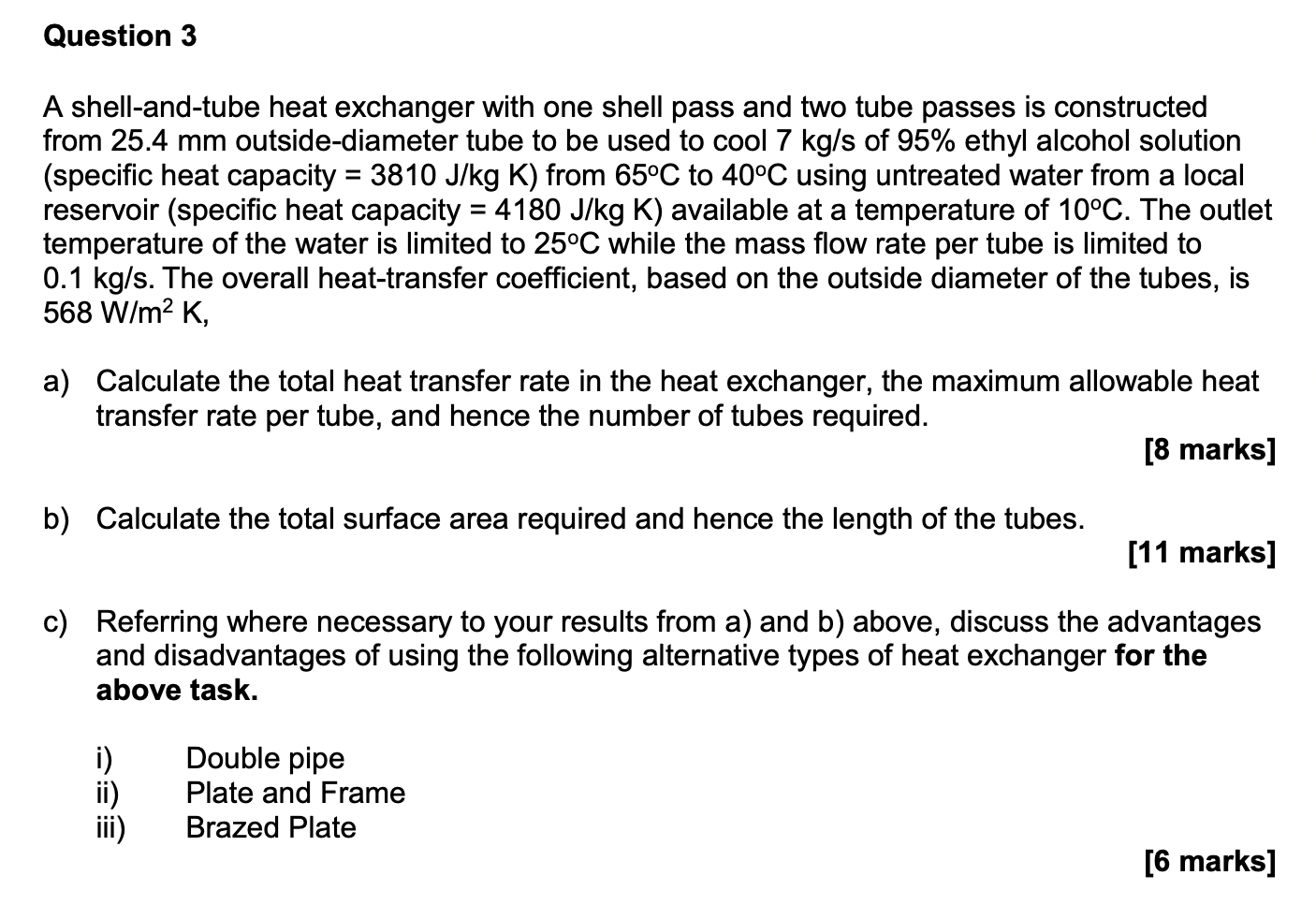Home /
Expert Answers /
Mechanical Engineering /
a-shell-and-tube-heat-exchanger-with-one-shell-pass-and-two-tube-passes-is-co-pa736
(Solved): A shell-and-tube heat exchanger with one shell pass and two tube passes is co ...

A shell-and-tube heat exchanger with one shell pass and two tube passes is constructed from \( 25.4 \mathrm{~mm} \) outside-diameter tube to be used to cool \( 7 \mathrm{~kg} / \mathrm{s} \) of \( 95 \% \) ethyl alcohol solution (specific heat capacity \( =3810 \mathrm{~J} / \mathrm{kg} \mathrm{K} \) ) from \( 65^{\circ} \mathrm{C} \) to \( 40^{\circ} \mathrm{C} \) using untreated water from a local reservoir (specific heat capacity \( =4180 \mathrm{~J} / \mathrm{kg} \mathrm{K} \) ) available at a temperature of \( 10^{\circ} \mathrm{C} \). The outlet temperature of the water is limited to \( 25^{\circ} \mathrm{C} \) while the mass flow rate per tube is limited to \( 0.1 \mathrm{~kg} / \mathrm{s} \). The overall heat-transfer coefficient, based on the outside diameter of the tubes, is \( 568 \mathrm{~W} / \mathrm{m}^{2} \mathrm{~K} \), a) Calculate the total heat transfer rate in the heat exchanger, the maximum allowable heat transfer rate per tube, and hence the number of tubes required. [8 marks] b) Calculate the total surface area required and hence the length of the tubes. [11 marks] c) Referring where necessary to your results from a) and b) above, discuss the advantages and disadvantages of using the following alternative types of heat exchanger for the above task. i) Double pipe ii) Plate and Frame iii) Brazed Plate
Expert Answer
A shell-and-tube heat exchanger with one shell pass and two tube passes is constructed from25.4 mmoutside-diameter tube to be used to cool7 kg/sof95%e